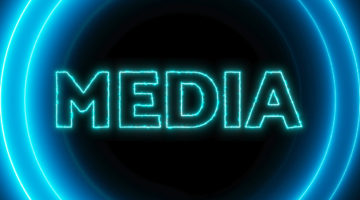Take a poll of three female friends under the age of 50 and ask them if any of them have uterine fibroids and chances are that at least one of them does. In fact, poll a room of 100 women and chances are that 30 of those women will have had fibroids in their lifetime, and if they are African-American that number can be as high as 50 out of that room of 100 women.
Fibroids are very commonplace, but not often spoken about, yet women suffer silently with the complications and health issues that come along with fibroids, including anemia, heavy and/or irregular menstrual cycles, painful intercourse, bulging bellies, frequent urination, fertility issues and other complications. Many women with fibroids are never diagnosed, and for other women, treatment is not needed since the fibroids are not bothersome. However, for a large number of women, fibroids and related issues can often interfere with their quality of life and may require treatment.
In the past, hysterectomy was the common treatment for fibroids, but over the past couple of decades the medical community has concluded that many of the hysterectomies were unnecessary and could have been treated with less invasive treatment options that are safer and preserves the uterus as well as a woman’s fertility, including hormone therapy, myomectomy, Uterine Fibroid Embolization (UFE) and endometrial ablation.
A lack of awareness and education around fibroids and treatment options has been a big reason for the high number of unnecessary hysterectomies. In an effort to increase awareness and educate on treatment options, the Girl’s Beauty Suite: A Fibroid Awareness Event was hosted on Saturday, May 31 with support by ask4UFE. The event was a fun filled day of health, wellness, and beauty pampering provided by area businesses followed by a health discussion on fibroids and treatment options.
As a Vascular and Interventional Radiologist, I specialize in the minimally invasive UFE procedure and see a lot of patients who suffer for years with fibroid-related issues and never seek treatment because they are not aware that heavy or prolonged periods is not normal. For those who are aware of their fibroids, they often do not seek treatment because of the assumption that a hysterectomy is the only treatment, when the fact is that it is not. You can have fibroids, treat them effectively, and still keep your uterus intact and also preserve your fertility. The key is understanding the various treatment options available and deciding on the treatment that fits your situation and needs.
What are uterine fibroids?
Fibroids are benign, non-cancerous tumors that grow in or on the walls of the uterus and can range in size from less than an inch to more than six inches. It is a myth that fibroids can turn into cancer later on, and years of studies have concluded that fibroids are not cancerous. One out of three women will have fibroids by age 50, and African-American women are more likely to have fibroids than white women.
What causes fibroids?
The exact causes of fibroids are unknown. However, some studies have shown that high levels of estrogen and diet seem to be linked to fibroids. It is also unknown why African-American women are disproportionately affected by fibroids, and researchers continue to seek answers on why this is so.
What are symptoms of fibroids?
Most fibroids cause no symptoms and never have to be treated and only need to be monitored. In fact, many women have fibroids and may not even know it. If you do experience symptoms, they may include: heavy or prolonged periods, anemia, pain or bleeding during intercourse, an enlarged belly, frequent urination and constipation and/or bloating. What are treatment options for fibroids?
Hormone Therapy
In many cases, fibroids do not require treatment unless they become a bother and/or interfere with fertility. Hormone therapy can be an option to consider particularly when heavy or a prolonged period is the biggest issue. These drugs treat the symptoms of fibroids, but they do not make the fibroids go away, and the fibroid symptoms may return once the drugs end.
Uterine Fibroid Embolization (UFE)
A minimally invasive procedure performed by an interventional radiologist that treats fibroids without surgery, UFE works by using a catheter inserted into your femoral artery in the upper thigh to inject small particles into the blood supply feeding the fibroids. This deprives the fibroids of blood and oxygen and causes them to shrink. The advantage of UFE is that recovery time is less, surgery is avoided, a sedative and local anesthetic is administered, and the procedure takes about 45 – 60 minutes. However, UFE is not ideal for women who want to get pregnant.
Myomectomy
Myomectomy is a minimally invasive procedure that surgically removes the fibroid and preserves the uterus. Myomectomy requires general anesthesia and the fibroids may grow back. However, this procedure is effective and ideal for women who want to have children. A myomectomy can be performed using three different surgical methods: hysteroscopy, laparoscopy and laparotomy. A myomectomy performed laparoscopically is done through tiny incisions in the abdomen to remove the fibroids and has a recovery time of one to two weeks. A laparotomy procedure requires a three to four inch midline
incision under the belly button and has a longer recovery time of four to six weeks. A hysteroscopic myomectomy removes the fibroids through the vagina, and no incision is needed. If the fibroids are submucous or intracavitary they are easily visualized and can be removed using a wire loop or similar device. The time frame for a hysteroscopy can range from 30 minutes to two hours and recovery time is generally one to two days.
Endometrial Ablation
This outpatient procedure places a scope through the cervix to burn and scrape the lining of the uterus. This procedure is used to control heavy bleeding, but does not treat fibroids and is ideal for women who do not wish to have children.
Hysterectomy
Hysterectomy is a major surgical procedure and is the only sure way to permanently remove fibroids. However, a hysterectomy completely removes the uterus and permanently affects fertility. This treatment option is ideal for women who do not wish to have children.
Adam Geronemus is the Fibroid Center’s associate medical director. Patients of the Fibroid Center can be seen by both an interventional radiologist (a UFE specialist) and gynecological surgeon in one visit. To schedule, call 786-662-8602. For additional information on fibroids, visit ask4UFE.com











No Comment